Comparing and Contrasting Religion in the Modern World with Christianity
This short handout compares and contrasts several key ideas and beliefs in Christianity and religion in the modern world.
This video is a song based on a Scripture verse about loving one another.
The video talks about how we can change the world in a positive way.
This video is a dramatization that helps explain the meaning of the different parts of the Lord's Prayer.
This video is an example of the video you can create with the children for an additional activity.
This video is the song and lyrics to "Lovely Noise" and can be used with hand motions.
This is a video of the song "Happy" and can be used as an engage activity for the lesson.
This song, illustrated in child-friendly animation, uses the story of the 5 loaves and 2 fishes to show that Jesus can work great things through us when we surrender our lives to him. Please note: YouTube comments, ads, and suggested …
This video is a catchy song based on Jesus, the Good Shepherd, that children can learn.
This video is an animated retelling of the Parable of the Prodigal Son.
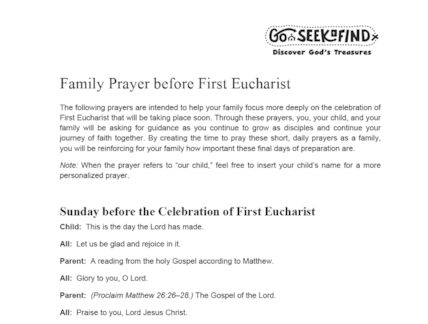
These prayers will help your family focus more deeply on the celebration of First Eucharist that will take place soon. Through these prayers, you, your child, and your family will ask for guidance as you continue to grow as disciples …
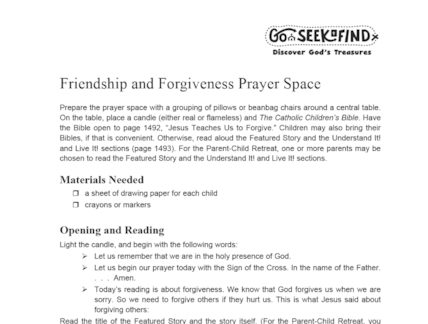
An activity, including a discussion and a craft, on forgiving friends and family members, based on The Catholic Children’s Bible featured story “Jesus Teaches Us to Forgive”, Matthew 18:21–35.

Make this simple prayer card for your family table. The prayer is especially appropriate as preparation for First Reconciliation.
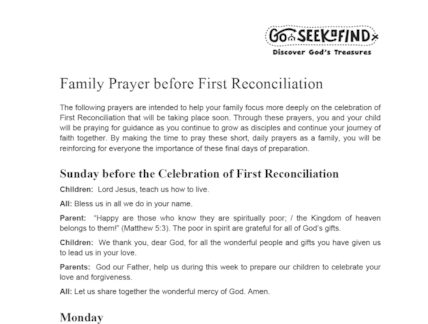
These prayers are intended to help your family focus more deeply on the celebration of First Reconciliation that will take place soon. You and your child will pray for guidance as you continue to grow as disciples and continue your …
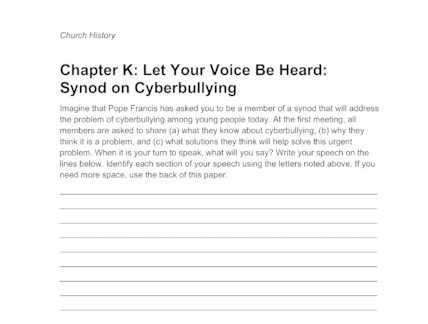
Students are challenged to write a speech as if they were a member of Pope Francis’ synod addressing the problem of cyberbullying.
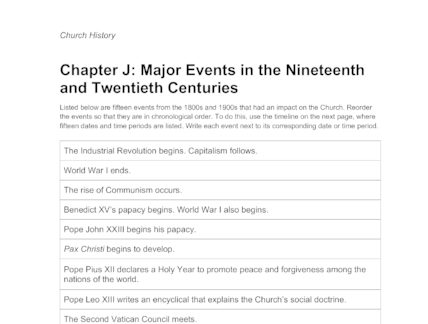
Students order important events from the 19th and 20th centuries.
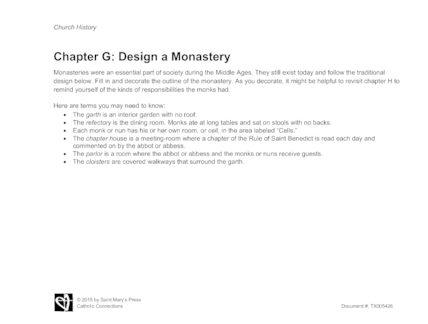
Students design a monastery based on the responsibilities and needs of the monks.

On this worksheet, students solve clues to list the names of important early Christians. These answers are then used to decode a secret message.

This handout guides students as they become familiar with searching for information in the Catechism of the Catholic Church.
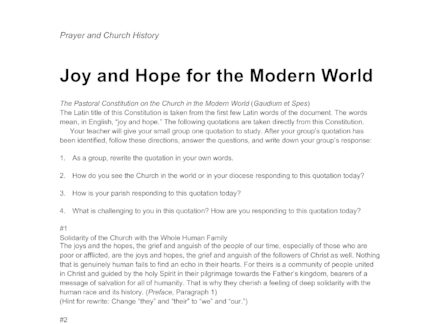
This handout provides questions for students to reflect on and answer as they read quotations from this Constitution.

This handout provides questions for students to research on the Internet about Renaissance Humanism.
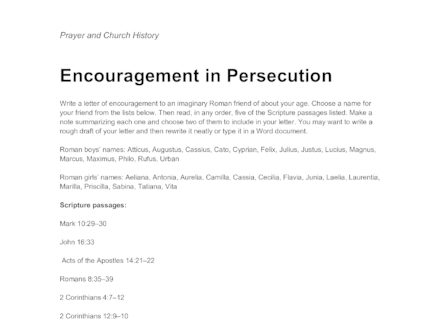
This handout outlines a writing assignment in which students write a letter to an imaginary Roman friend who is enduring persecution in the Empire. Students must use Scripture passages to help them in the writing process.
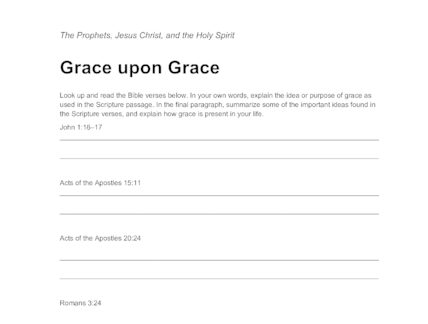
Students look up and read several passages about grace. The worksheet asks students to identify the purpose of grace in each and summarize the ways grace is present in their own lives.
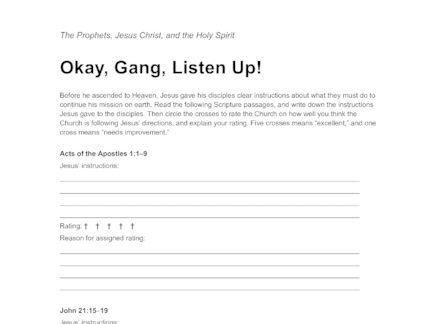
Students look up and read several passages that highlight Jesus’ instructions to his disciples. This worksheet then challenges students to reflect on how well the Church is following the instructions today.

Students look up and read several miracle stories from the New Testament before identifying common points between them.
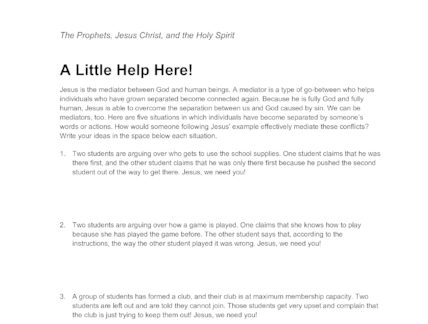
After reading several real-life examples of conflict, students provide suggestions to mediate each situation.
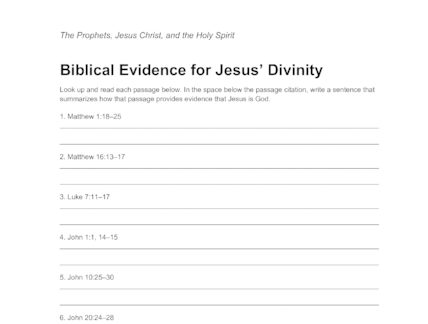
Students look up, read, and examine Scripture passages that provide evidence that Jesus is God.
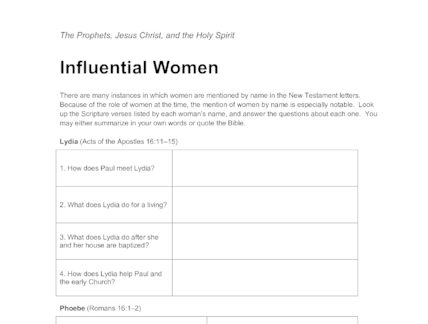
Students look up, read, and answer questions about Scripture passages that note influential women in the New Testament.
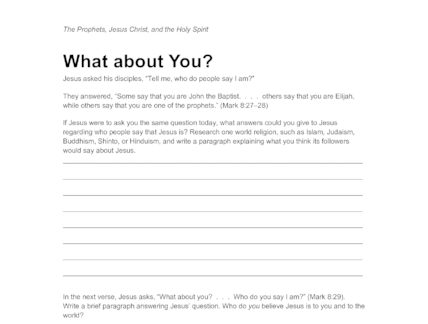
After reading Mark 8:27-29, students must answer several questions about who Jesus is to today’s world and people.

Students must look up several Scripture passages that give insight into the disciples of Jesus. This worksheet poses questions that help make Jesus’ mission relatable to students.
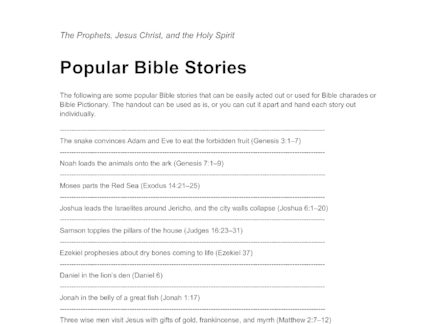
This handout provides a list of Scripture passage that can be used for games and to review well-known Bible stories.
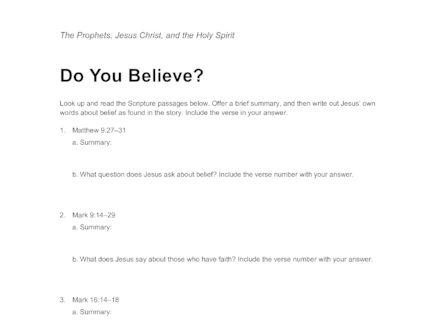
For this worksheet, students look up Scripture passages that examine the words and beliefs of Jesus in each story.
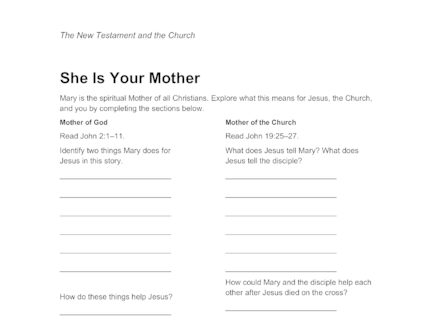
As students complete this worksheet, they will explore what it means when we say that Mary is the Mother of God and the Mother of the Church.
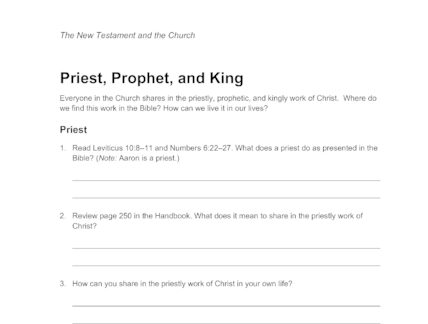
Students find examples in the Bible of the priestly, prophetic, and kingly work of Christ before applying it to their own lives.
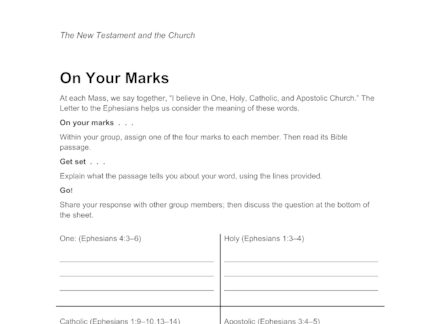
This worksheet guides group members to work together as they identify the importance of the church being “One, Holy, Catholic, and Apostolic”.

Students match symbols from Jesus’ first miracle the wedding feast in Cana with their meaning and significance.

On this worksheet, students retell the story of the Prodigal Son using texting and social media messages.

On this worksheet, students read all four Gospel accounts of the resurrection before identifying similarities and differences between them.
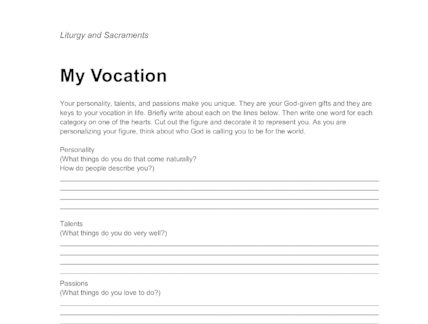
This handout helps students identify their talents, gifts, and personality and how these fit into God’s vocation for their lives.
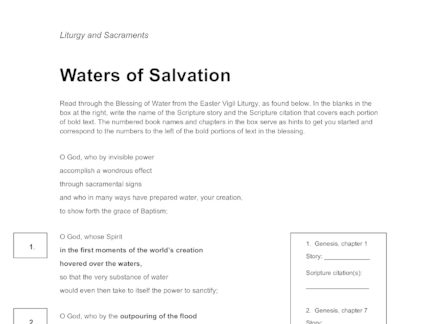
On this worksheet, students identify the Scripture passages associated with the various parts of the Blessing of the Water used at the Easter Vigil.
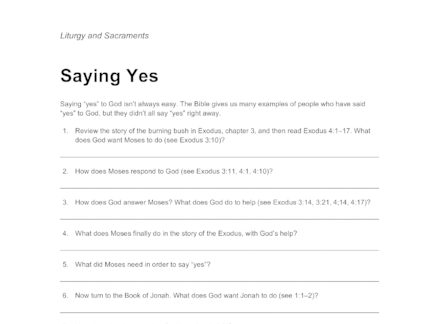
This handout guides students to examine several Scripture passages exemplifying what it means to say “yes” to God’s call.
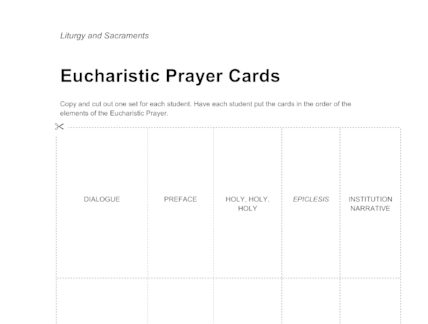
This handout provides each element of the Eucharistic Prayer on a separate card for students to arrange in order.
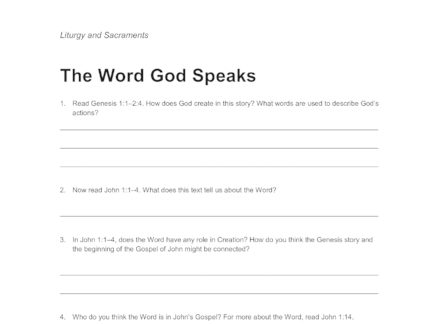
This worksheet helps students to explore the meaning of “the Word” in John’s Gospel and throughout Scripture.
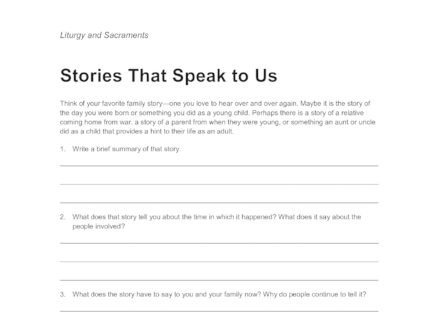
This handout guides students to recognize the importance of stories, both in our families and our faith.
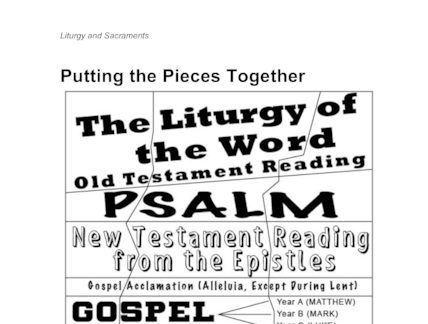
This puzzles helps students to identify and order the parts of the Liturgy of the Word.

Students identify the liturgical season in which their birthday falls. This worksheet then guides them to identify and summarize the readings for that day.

This handout asks students to identify the role of the various liturgical ministers at Mass.
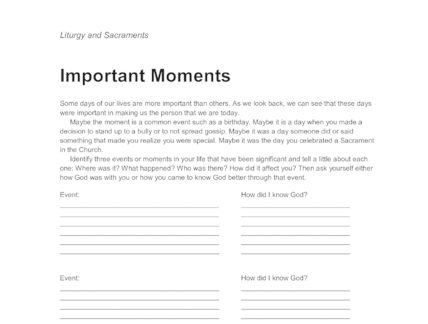
This handout asks students to think about and reflect on moments in their life that have been significant.

This handout challenges students to find symbols in their classroom or school and identify the deeper meaning of each.
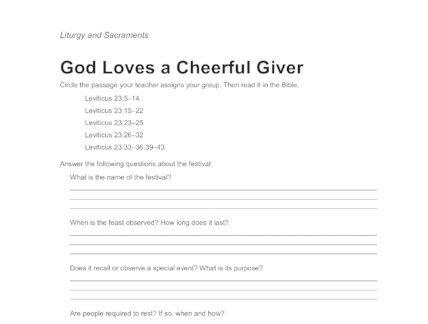
This worksheet guides students to read and answer questions about a specific Hebrew festival from the book of Leviticus.

This chart provides students space to create examples of acts of charity and social justice for several real-life situations.

This handout provides a series of Scripture passages and real-life accounts to help students reflect on poverty in America.
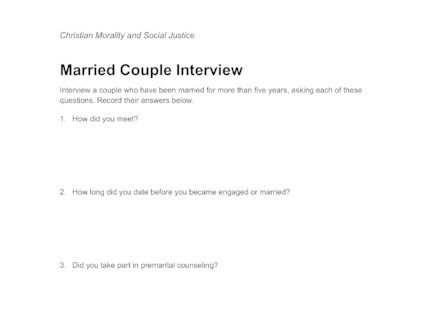
This handout provides the outline for an interview of a married couple.
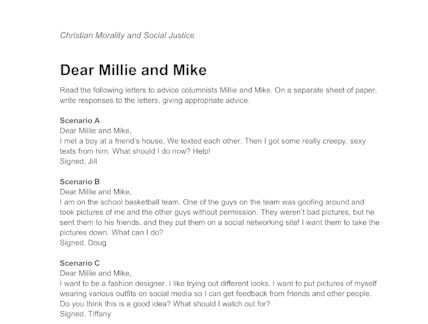
This handout provides several real-life situations that teens might encounter. Students are challenged to respond to the situations and give advice to other teens.
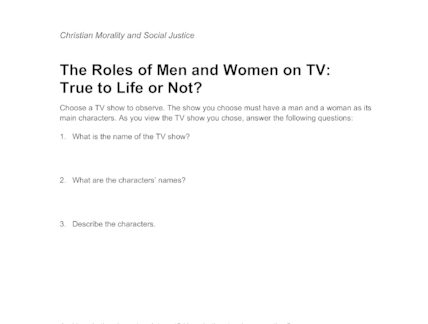
This handout provides questions for students to answer as they observe the roles of men and women on TV.
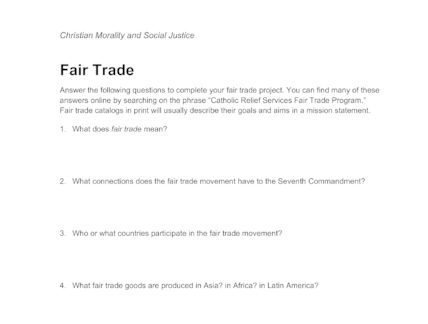
This worksheet provides questions for students to answer as they research and learn about the Fair Trade Movement.

This is a set of riddles to challenge students as they learn about Samson in the Old Testament.
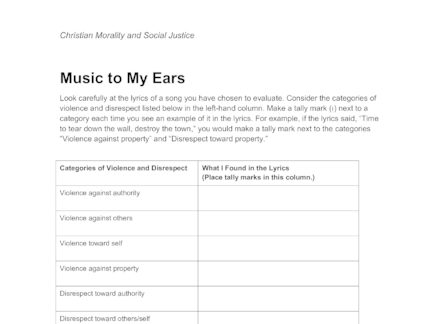
Students evaluate a contemporary piece of music based on several different categories of violence and disrespect.
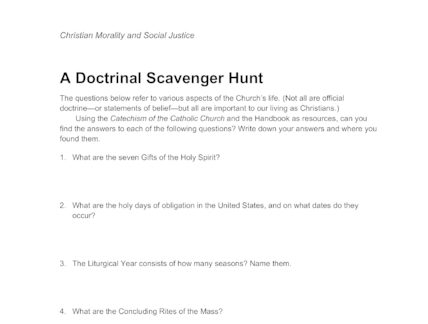
A scavenger hunt to find important Church doctrines, teachings and beliefs in the Catechism.

This worksheet helps students to read Scripture passages, answer questions about, and understand the importance of the Transfiguration of Jesus.
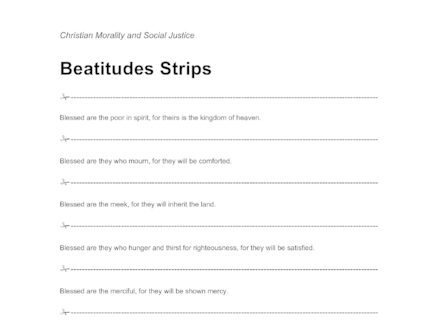
A list of the Beatitudes organized to be cut into strips for a class activity.

This handout provides a note-taking guide while reading chapters 19-20 from Exodus.

This is a set of interview questions to find out about an adult’s experience of being cheated or wronged.

This handout asks students to keep a running record of how they observe the Ten Commandments in their actions throughout a week.
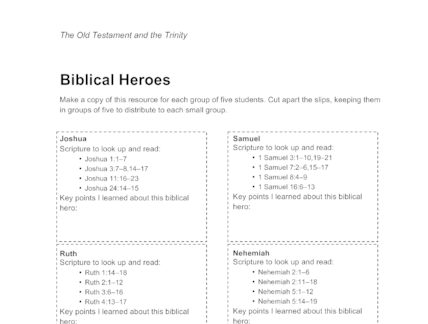
This handout assigns groups to read Scripture passages to learn about a specific biblical hero.
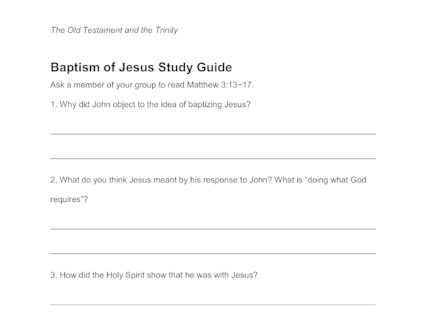
This study guide helps students reflect on the story of Jesus’ Baptism.
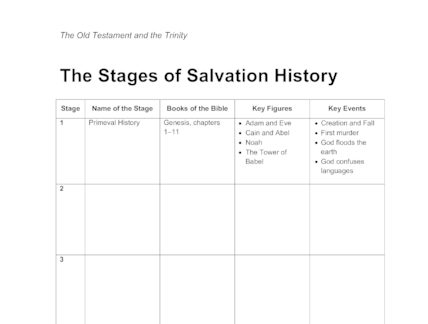
This chart allows students to organize information about the stages of salvation history.
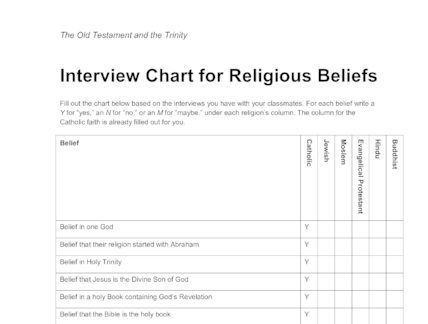
This chart allows students to see the comparison between the beliefs of five major religions and those of the Catholic Church.
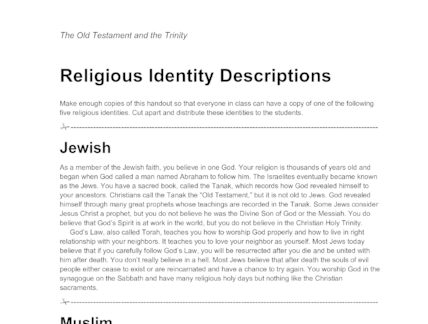
This handout provides the religious identities for five major world religions.
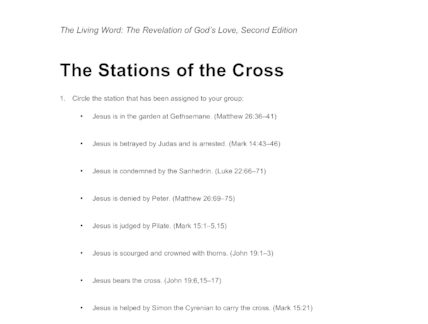
Students read a Scripture passage for an assigned station before creating an enactment and discussing questions.
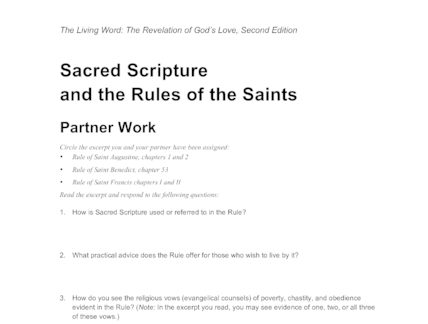
This activity has students work individually and in small groups to read and reflect on the rules of St. Augustine, St. Benedict, and St. Francis.
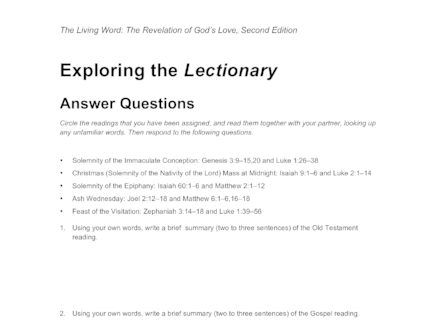
In this activity, partners read the readings for a specific feast day and identify key symbols, similarities, and differences that help make Mass more meaningful.

This preassessment for Unit 5 asks students a series of questions about the importance of prayer and Scripture in their own lives.
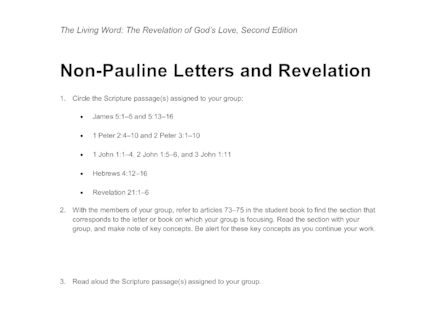
This small-group activity asks students to read and reflect on a Scripture passage from a Non-Pauline Letter in the New Testament. Students must then answer reflection questions about the passage.

This small-group activity asks students to read and reflect on a Scripture passage about Paul and the early Christian communities.
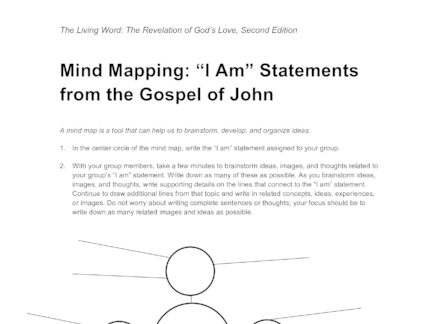
This small-group activity asks students to reflect on a specific “I am” statement from the Gospel of John.
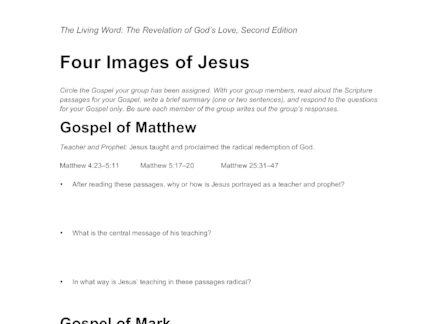
This small-group activity asks students to read a section of the Gospel and answer questions focused on the image of Jesus.
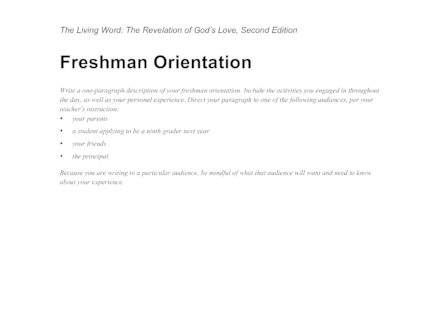
This writing assignment asks students to write a description of their freshman orientation to a specific audience.
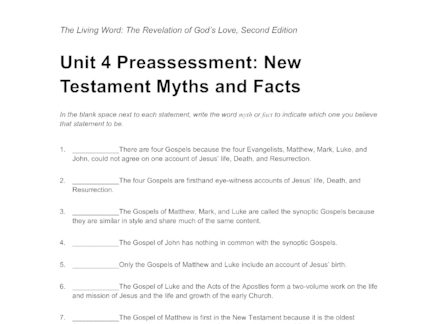
This preassessment identifies misconceptions that students may have about the New Testament.

These journal prompts will help students to reflect on suffering in the world and their personal lives.
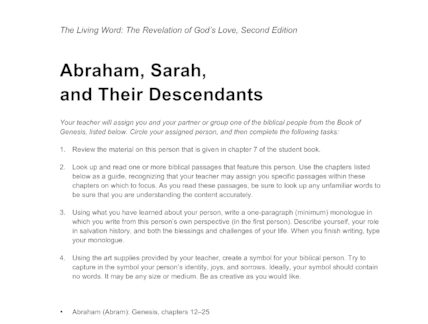
This partner project asks students to read and learn about a descendent of Abraham. The pairs must then complete a writing assignment and create an artistic symbol for the assigned person.

This preassessment for Unit 3 asks students to reflect on what they know, think they know, and want to know from the upcoming unit.
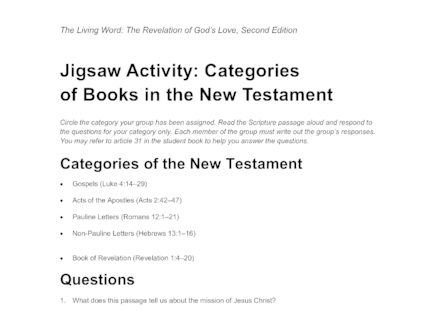
This activity asks small groups to answer questions about a specific section of the New Testament.
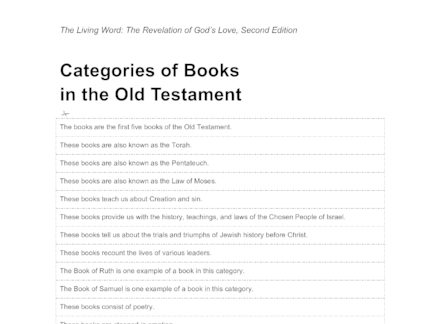
This is a list of characteristics to be divided among the books of the Old Testament.
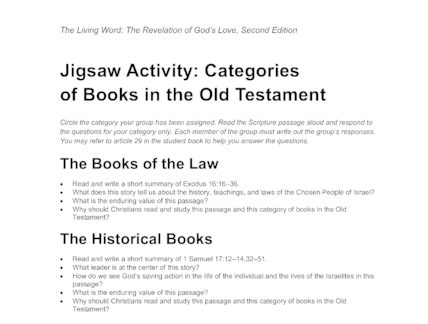
This activity asks small groups to focus on a small portion of the Old Testament as they read and answer questions.
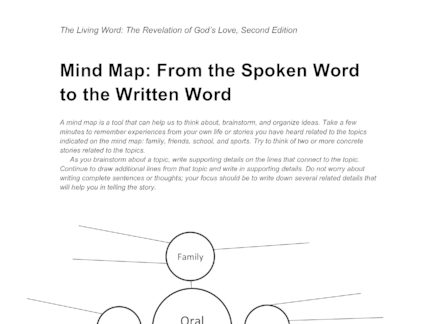
This Mind Map helps students to organize and brainstorm ideas about friends, school, sports, and family.
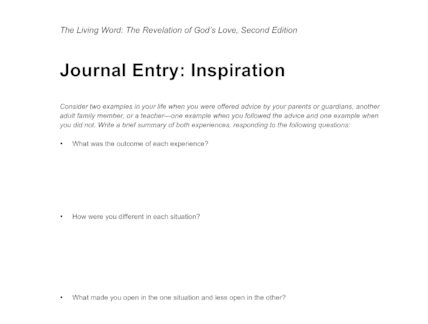
This is a journal prompt which asks students to reflect on times when they have been given advice.
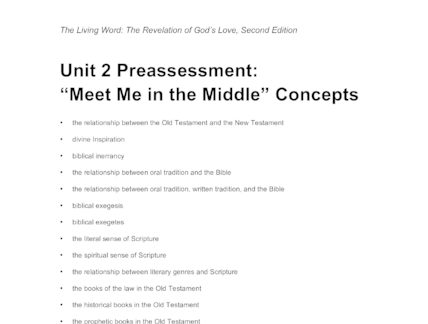
This preassessment lists many key concepts to be covered in Unit 2.
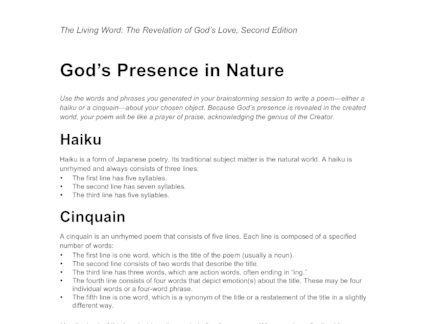
This assignment helps students to create a poem of praise about an object in nature.
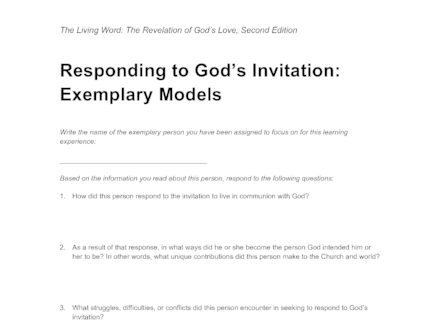
This project asks students to research an exemplary model of what it means to be the best person that God created each of us to be.
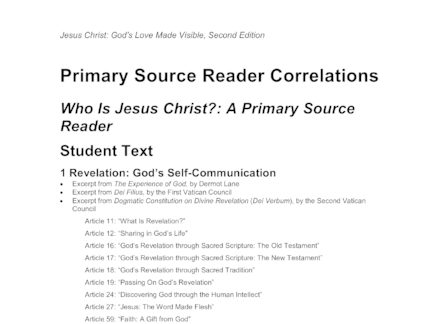
This is a list of articles and other sources to accompany student learning as they discover who is Jesus Christ.
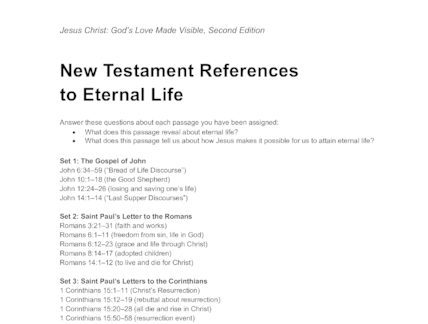
This handout lists Scripture passages to be read by students that reference eternal life and how Jesus makes it possible for us to attain it.

This worksheet helps students to take notes as they read articles and make connections to the principles of Catholic Social Teaching.
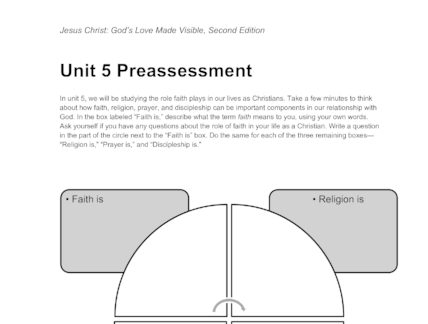
This preassessment for Unit 5 asks students to identify how faith, religion, discipleship, and prayer are important to their relationship with God.
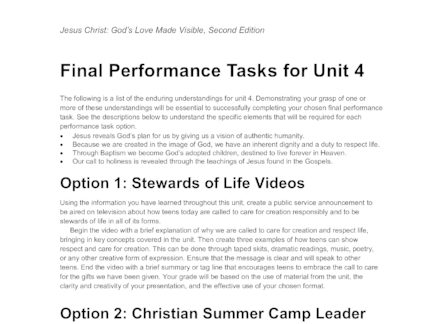
This handout provides two project options that allow students to demonstrate their understanding of the concepts learned in Unit 4.

This handout poses questions and gives statements that challenge to think about what it means to be fully human and how Jesus exemplified that in his life.
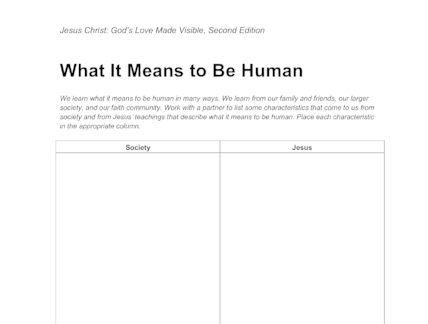
This handout helps students list characteristics that come from society and from Jesus’ teachings that describe what it means to be human.
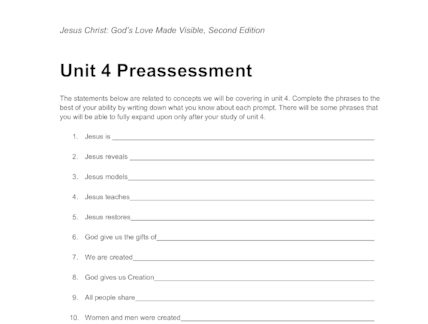
This preassessment asks students to complete phrases about the concepts to be covered in Unit 4.
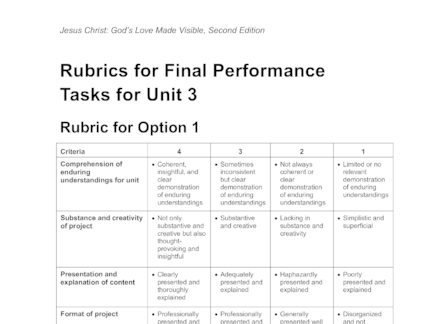
This is the rubric for two projects designed to assess student understanding of the concepts presented in Unit 3.
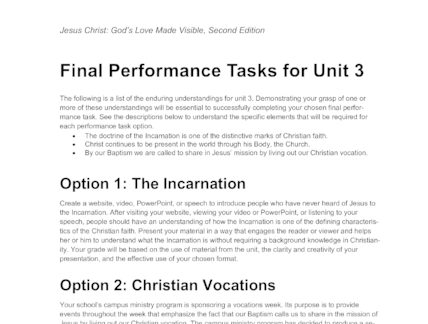
This handout presents two projects to assess student understanding of the concepts presented in Unit 3.
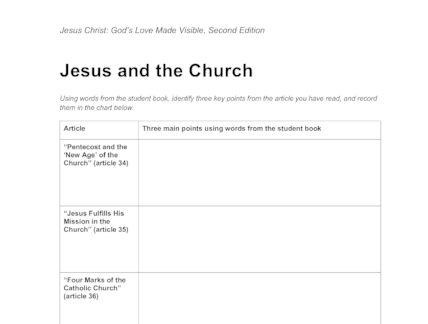
After reading several articles, students complete this chart by filling in key points about Jesus and the Church.

This is a list of terms and definitions to be learned and used in Unit 3.
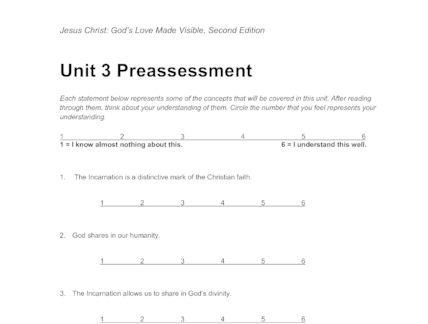
This preassessment identifies student understanding of the concepts to be presented in Unit 3.

This rubric evaluates the two final-project possibilities for Unit 2.

Students think of examples when they have experienced or discovered God in creation.

Students create a storyboard to show how God is revealed in Sacred Tradition.
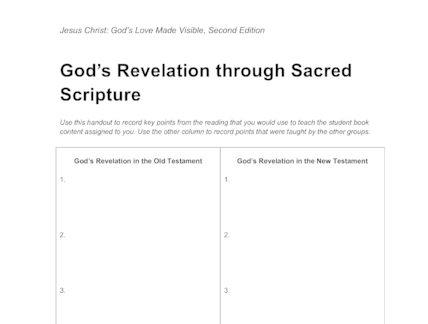
This handout provides an outline for students to record key points taught by other groups from this section.
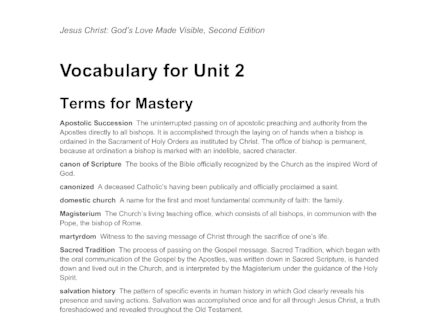
This is a list of words and definitions to be learned throughout Unit 2.
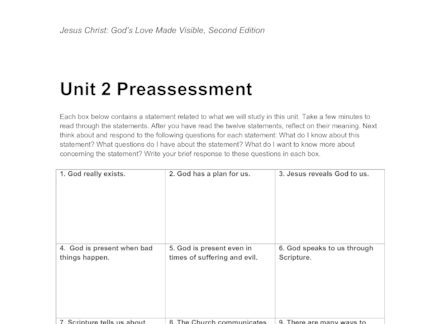
This preassessment helps students identify what they know and want to know about concepts from Unit 2.
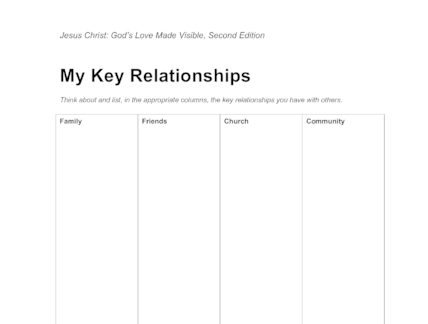
This handout provides a chart for students to list key relationships that are from their church, community, family, and friends.

This preassessment for Unit 1 guides students to reflect on their previous knowledge of and what they would like to learn about the Trinity.
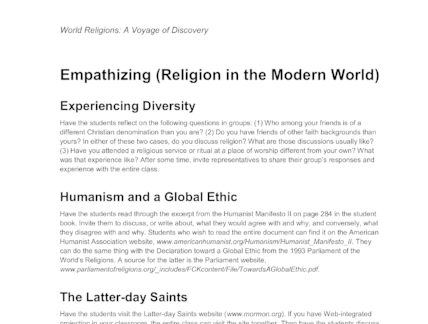
This article provides several suggestions of ways to help students reflect on their experiences with people from different forms of religion in the modern world.
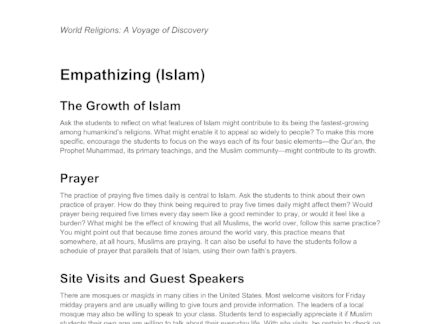
This handout provides several suggestions to help students draw connections between Islam and Christianity.
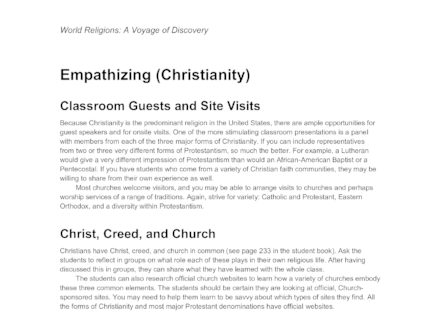
This handout provides several suggestions to help students draw connections between the various denominations of Christianity.
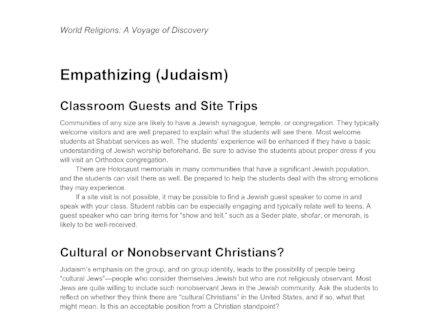
This handout provides several suggestions to help students draw connections between Christianity and Judaism.
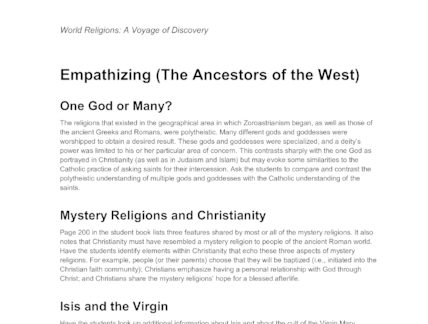
This handout provides several suggestions to help students draw connections between Christianity and polytheistic religions of the West.
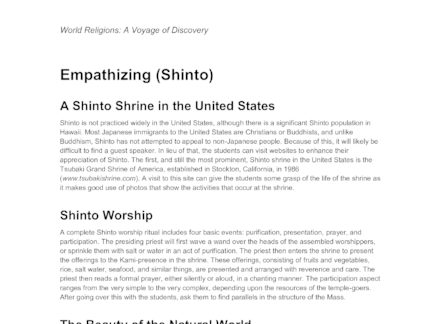
This article provides several possible ideas of ways to help students see, experience, and better understand the Shinto religion.

This short article provides questions, reflections, and suggestions to help students empathize with Zen Buddhism.
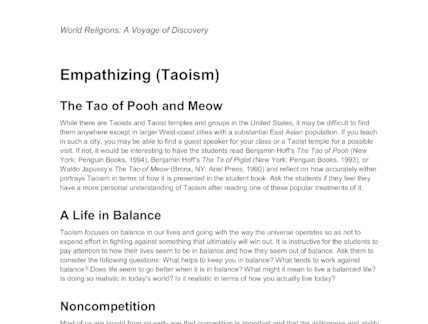
This short article provides questions, reflections, and suggestions to help students empathize with Taoism.
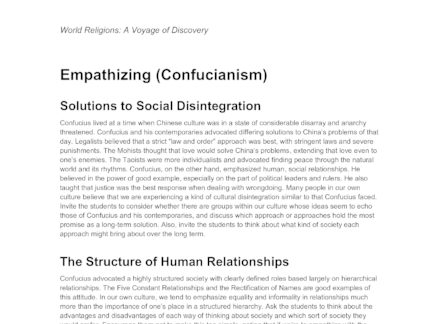
This short handout provides questions, reflections, and suggestions to help students empathize with Confucianism.
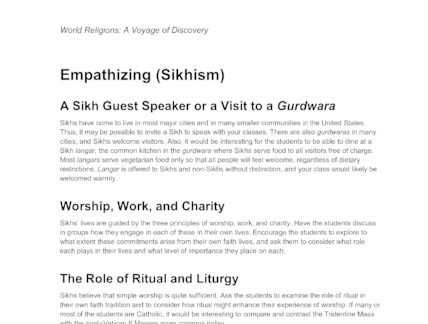
This short handout provides questions, reflections, and suggestions to help students empathize with Sikhism.
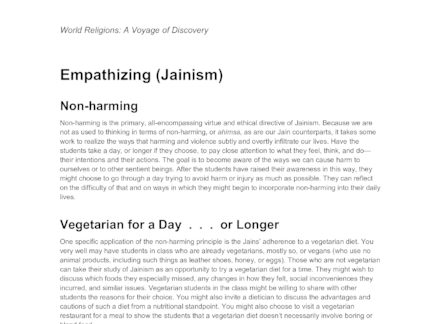
This short handout provides questions, reflections, and suggestions to help students empathize with Jainism.
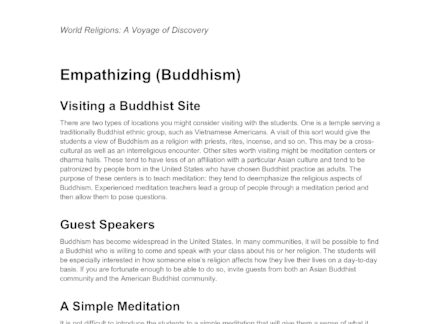
This short handout provides questions, reflections, and suggestions to help students empathize with Buddhism.
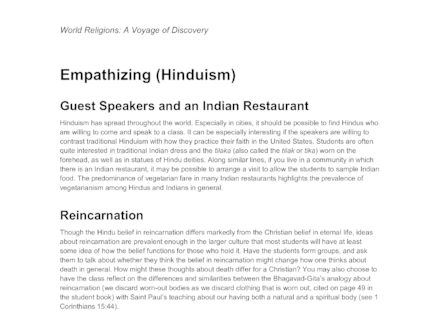
This short handout provides questions, reflections, and suggestions to help students empathize with Hinduism.
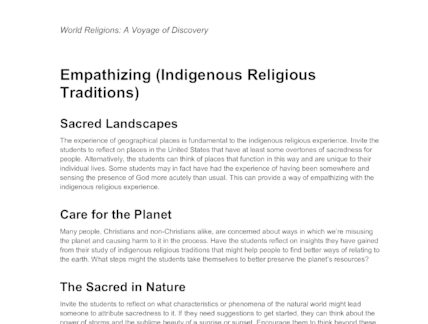
This short handout provides questions and reflections to help students empathize with indigenous religions.
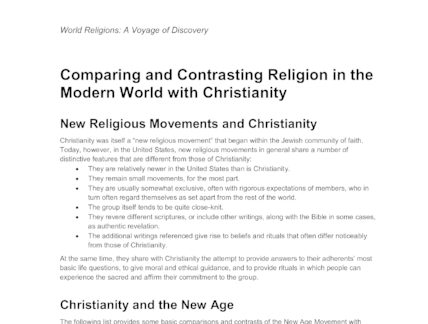
This short handout compares and contrasts several key ideas and beliefs in Christianity and religion in the modern world.

This short handout compares and contrasts several key ideas and beliefs in Islam and Christianity
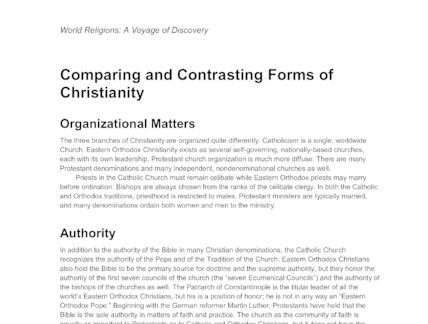
This short handout compares and contrasts several key ideas and beliefs in different forms of Christianity.
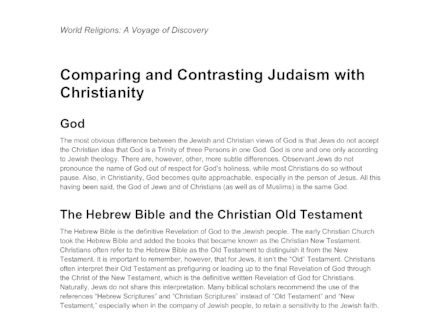
This short handout compares and contrasts several key ideas and beliefs in Christianity and Judaism.
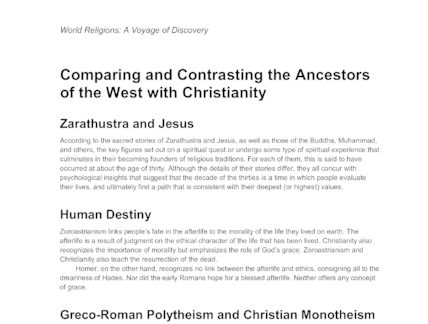
This short handout compares and contrasts several key ideas and beliefs in Christianity and the Ancestors of the West.
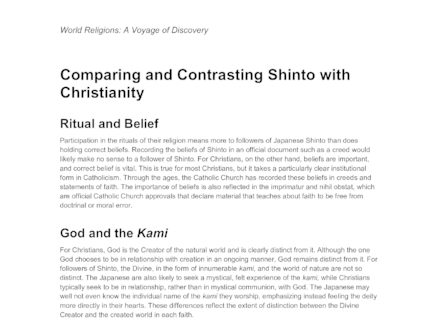
This short handout compares and contrasts several key ideas and beliefs in Christianity and Shinto.
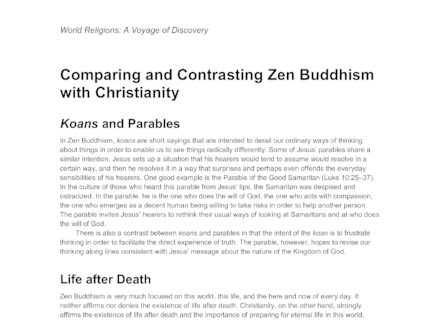
This short handout compares and contrasts several key ideas and beliefs in Christianity and Zen Buddhism.
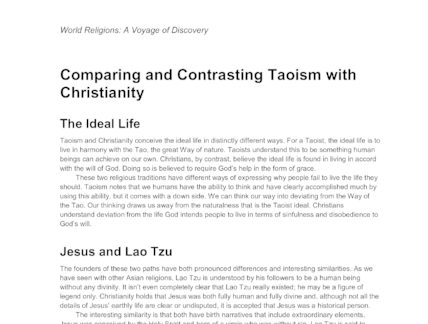
This short handout compares and contrasts several key ideas and beliefs in Christianity and Taoism.
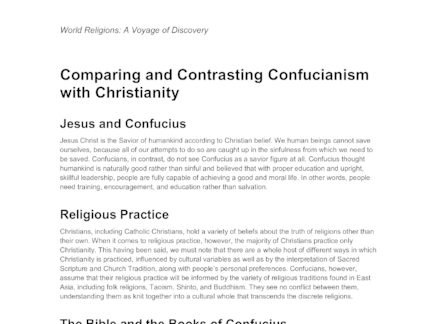
This short handout compares and contrasts several key ideas and beliefs in Christianity and Confucianism.
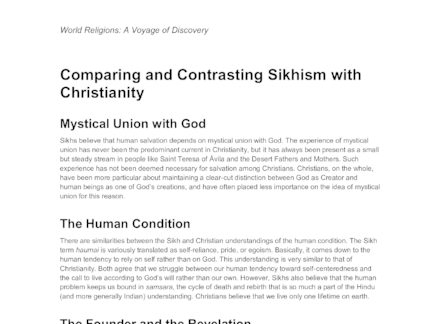
This short handout compares and contrasts several key ideas and beliefs in Christianity and Sikhism.
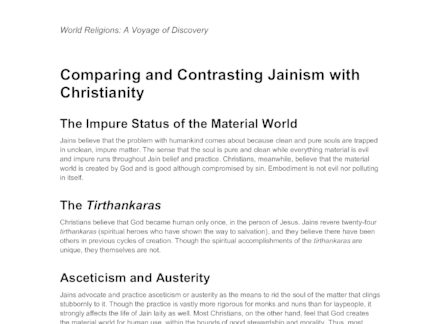
This short handout compares and contrasts several key ideas and beliefs in Christianity and Jainism.

This short handout compares and contrasts several key ideas and beliefs in Christianity and Buddhism.
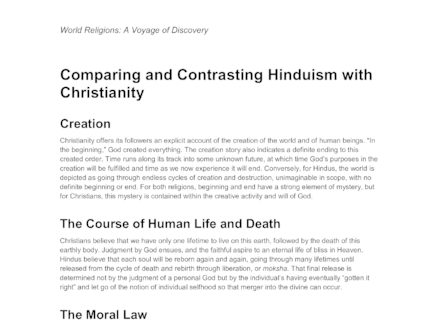
This short handout compares and contrasts the key ideas and beliefs in Christianity and Hinduism.

This short handout compares and contrasts the ideas of god, an ultimate reality, and history between indigenous religious traditions and Christianity.
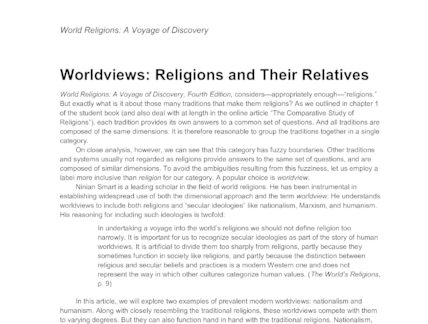
This article explores two examples of modern worldviews and how they different from traditional religions.
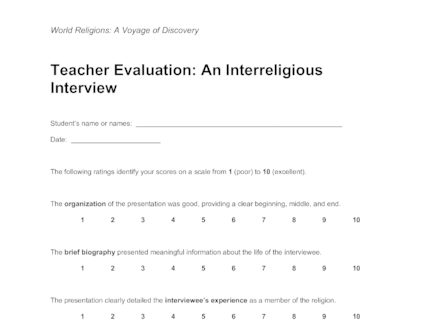
A teacher evaluation for interviewing someone of a different religion.
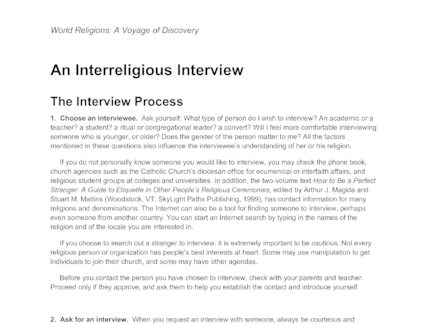
This handout offers guidelines for setting up an interview with a person from a different religion.
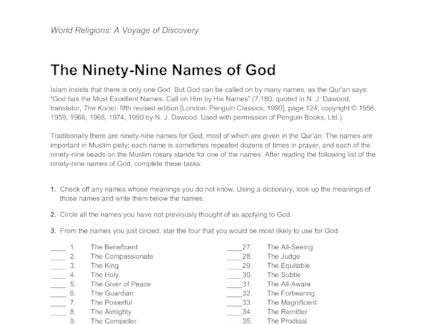
This handout lists the ninety-nine Islamic names for God and poses several questions regarding the list.
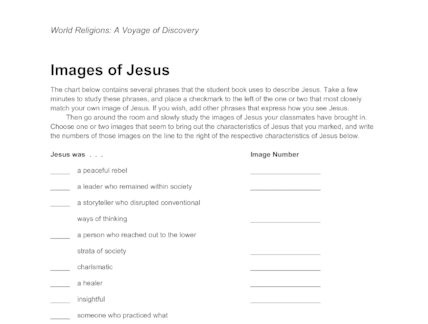
This handout provides many different images and descriptions of Jesus for students to examine and relate to.
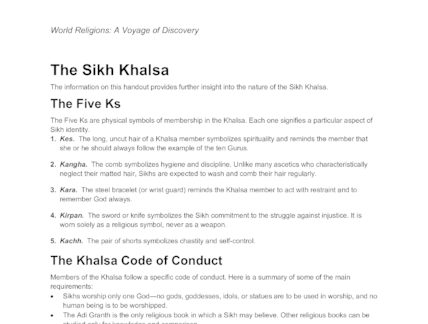
The information on this handout provides further insight into the nature of the Sikh Khalsa

This list of the ten Gurus of Sikhism briefly summarizes the key contributions of each Guru.
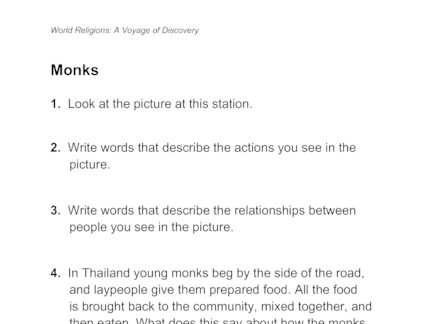
This handout is to be used as students rotate to various stations. At this station, students examine a picture depicting monks in Thailand.
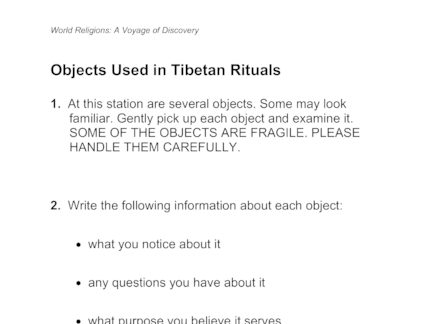
This handout is to be used as students rotate to various stations. At this station, students examine objects used in Tibetan rituals.
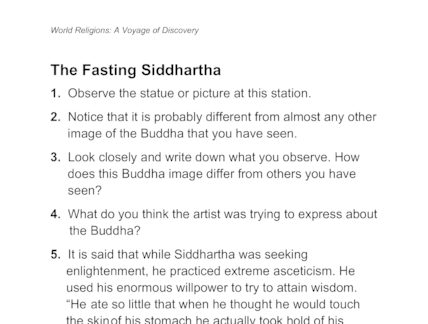
This handout is meant to be used as part of a station activity in which students observe different pieces of artwork from various religions.
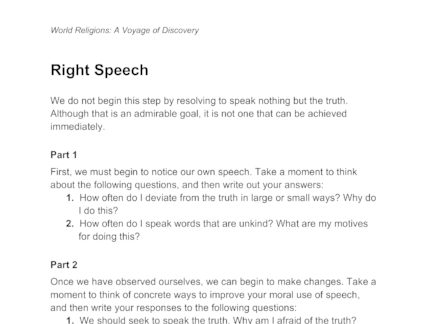
This handout provides a reflection on students’ use of words and speech. Students identify ways to improve their use of words to speak truth and kind things.

This handout provides a space for students to write impressions, observations, or questions that arise as they meditate on a statue of Buddha.

This short article provides the point of view of a Blackfoot Indian about the illegalization of the Sun Dance.
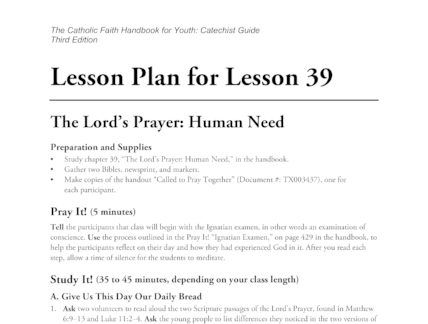
A lesson plan for lesson 39 in The Catholic Faith Handbook for Youth: Catechist Guide.
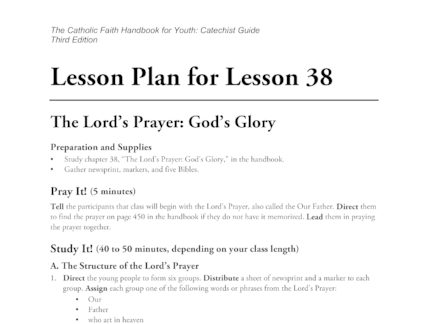
A lesson plan for lesson 38 in The Catholic Faith Handbook for Youth: Catechist Guide.
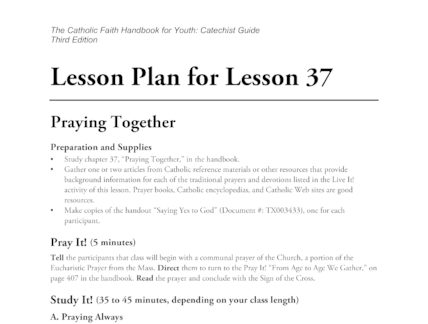
A lesson plan for lesson 37 in The Catholic Faith Handbook for Youth: Catechist Guide.
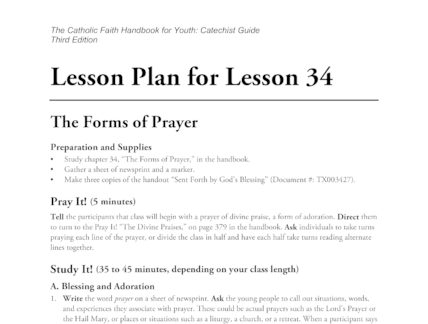
A lesson plan for lesson 34 in The Catholic Faith Handbook for Youth: Catechist Guide.
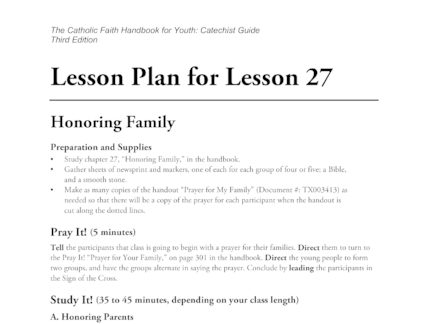
A lesson plan for lesson 27 in The Catholic Faith Handbook for Youth: Catechist Guide.
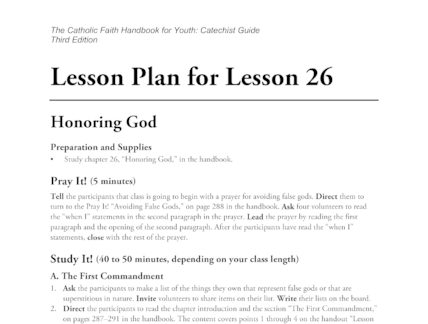
A lesson plan for lesson 26 in The Catholic Faith Handbook for Youth: Catechist Guide.
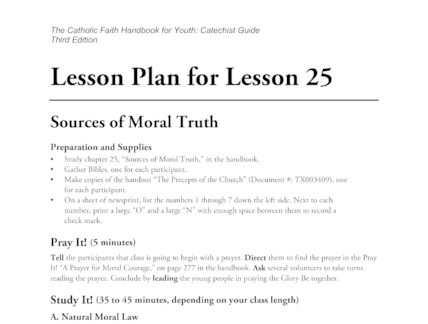
A lesson plan for lesson 25 in The Catholic Faith Handbook for Youth: Catechist Guide.
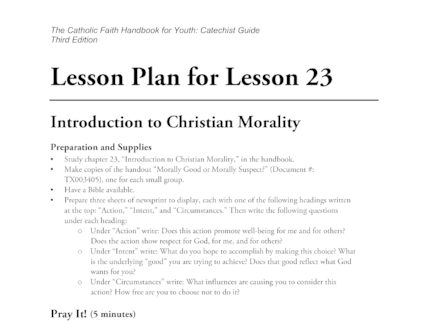
A lesson plan for lesson 23 in The Catholic Faith Handbook for Youth: Catechist Guide.
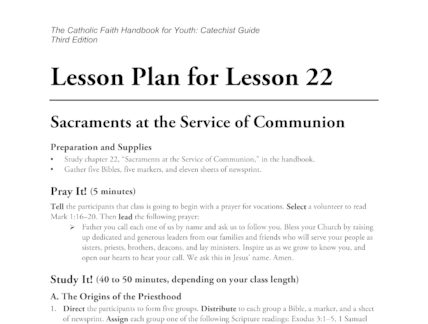
A lesson plan for lesson 22 in The Catholic Faith Handbook for Youth: Catechist Guide.
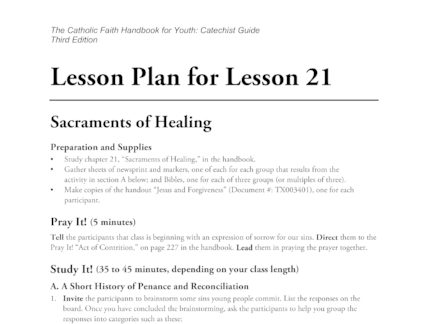
A lesson plan for lesson 21 in The Catholic Faith Handbook for Youth: Catechist Guide. In this lesson students explore the sacraments of healing.
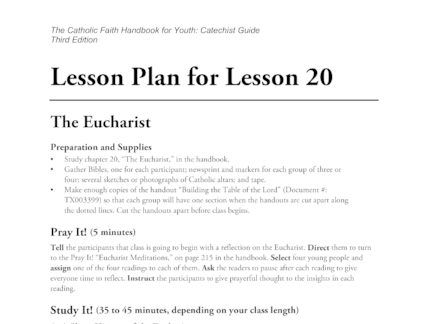
A lesson plan for lesson 20 in The Catholic Faith Handbook for Youth: Catechist Guide.
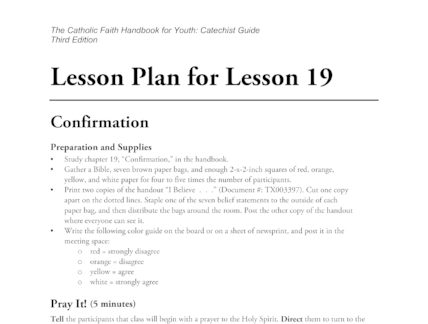
A lesson plan for lesson 19 in The Catholic Faith Handbook for Youth: Catechist Guide.
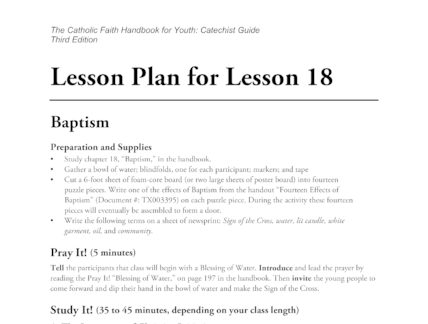
A lesson plan for lesson 18 in The Catholic Faith Handbook for Youth: Catechist Guide.

A lesson plan for lesson 17 in The Catholic Faith Handbook for Youth: Catechist Guide.

A lesson plan for lesson 15 in The Catholic Faith Handbook for Youth: Catechist Guide.

A lesson plan for lesson 7 in The Catholic Faith Handbook for Youth: Catechist Guide.
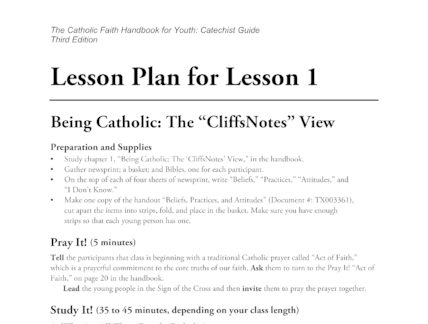
A lesson plan for lesson 1 in The Catholic faith Handbook for Youth: Catechist Guide. This lesson plan challenges students to identify why they are Catholic and the core beliefs, practices, and attitudes of Catholicism

This guided meditation communicates the Gospel message of simple living in a way that engages the imagination and inspires young people to actively simplify their lives. This activity is an excerpt from the book Justice and Service Ideas for Ministry …
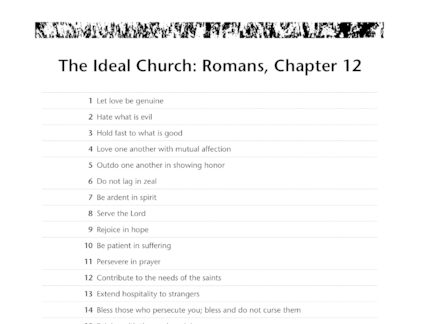
This handout lists 26 objectives of the ideal church as presented in Romans, Chapter 12

Small-group activity that guides students to discover the culture of Jesus’ world by searching the Gospels

This handout assigns students to a made-up Parish Council Committee. Students must then brainstorm ideas and activities to help engage young people in the life of the parish.

Students answer questions about the story of Jesus' Resurrection from one of the four Gospels.

Students review many familiar miracles performed by Jesus in the gospels before choosing a favorite.

This handout asks students to reflect and write about the ways that Jesus' healing is needed in their lives.
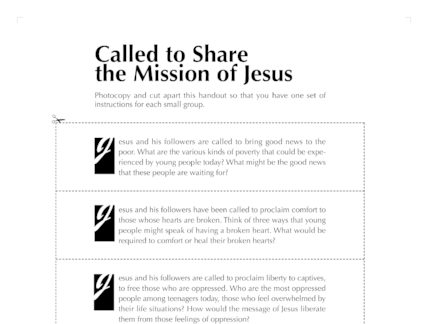
This small-group activity provides each group with an example of Christ's mission. Groups must answer questions surrounding their particular example.

Students read passages from the Gospels to explore the numerous emotions that Jesus experienced during his time on Earth.

This handout presents a list of different definitions and identities for God. Students are asked to choose ones that resonate with them.

This handout asks students to rank a list of items in life and society according to their importance.

This handout helps students to explore the communication and relationship they have with their parents by asking a series of reflective questions for students to answer.

This handout helps teens reflect on their body image and the influences on their attitudes towards their bodies.

This handout presents numerous questions about healthy, life-long marriages for students to think about and answer.

This handout presents several real-life family situations about which students must evaluate and make a decision.

This handout provides several examples of parenting dilemmas. Students are to read the situations, choose a course of action, and explain their thoughts.